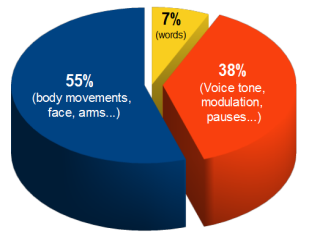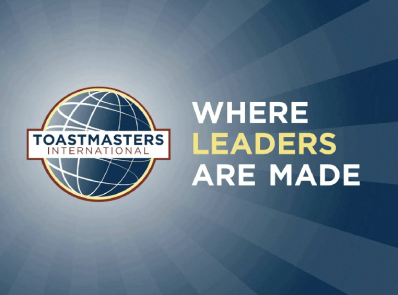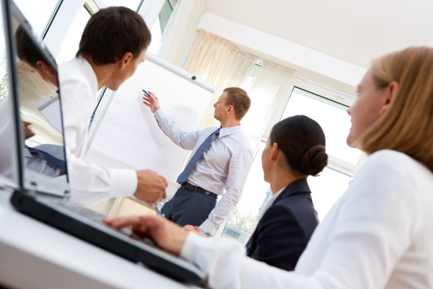Getting buy-in to your message

Communication is an art form. There is no doubt that effective communication improves relationships, engenders business results, opens unexpected doors, resolves conflict and more. Engaging, captivating and persuading an audience requires a level of awareness to ensure that communication skills and techniques are used in harmony. ‘Harmony?’ you say! There are critical elements to any discussion, presentation or speech that can enhance the result or the desired outcome. More on that later... For now, let’s consider how communication is defined.
The Oxford Dictionary defines communication as: The imparting or exchanging of information by speaking, writing, or using some other medium. For example: "television is an effective means of communication". synonyms: transmission, imparting, conveying, reporting, presenting, passing on, handing on, relay, conveyance, divulgence, divulgation, disclosure; spreading, dissemination, promulgation, broadcasting, circulation, circulating. For example: "meetings are used for the communication of research results". The definition includes:
-
A letter or message containing information or news. For example: "a telephone communication". Synonyms are: message, statement, announcement, report, dispatch, communiqué, letter, bulletin, correspondence, news, word, information, intelligence, instruction; info, gen, low-down, dirt; tidings. For example: "there has been no official communication regarding an appeal".
-
the successful conveying or sharing of ideas and feelings. For example, "there was a lack of communication between Pamela and her parents".
-
social contact. For example: "She gave him some hope of her return, or at least of their future communication". Synonyms are: contact, dealings, relations, connection, association, communion, socializing, intercourse, social intercourse, social relations, interface, interchange, correspondence, dialogue, talk, conversation, discussion, speaking, talking, chatting, meeting, getting in touch; commerce; traffic. For example: "there had been no communication between them for years".
In this conversation on communication, for me, the important element relates to the receipt of the information. For example, if you articulate an opinion to another person or a group, are the people listening to you clear on your message or not? Are they persuaded to your point of view?
 No matter what form of communication you use, can you articulate your message so there is no confusion to the person or group you are communicating with. For example, is the information intended to inform, inspire or promote action? In each case it is incumbent for you to create the best message, no exceptions. Where there is a mixed message, the message is open to misinterpretation. When that happens the dilution of your message can be completely counter to what you are trying to achieve. Interestingly, as an example, you can be talking to a relative, inadvertently offend them deeply and create years of mistrust through a misunderstanding. In a business or community setting, lack of a clear message can cause delays, confusion and blame. It can lead to a lowering of trust and lost business.
No matter what form of communication you use, can you articulate your message so there is no confusion to the person or group you are communicating with. For example, is the information intended to inform, inspire or promote action? In each case it is incumbent for you to create the best message, no exceptions. Where there is a mixed message, the message is open to misinterpretation. When that happens the dilution of your message can be completely counter to what you are trying to achieve. Interestingly, as an example, you can be talking to a relative, inadvertently offend them deeply and create years of mistrust through a misunderstanding. In a business or community setting, lack of a clear message can cause delays, confusion and blame. It can lead to a lowering of trust and lost business.
Your ability to be clear and concise is a success element. Importantly though, it is HOW you are clear and concise. Telling others (your audience perhaps) what to do, overriding others opinions, devaluing another, making others wrong so you can be right will adversely affect the way your message is received. The way you approach communication and the outcomes you are looking for, depend entirely on how well you deliver and articulate the message. There is always feedback, sometimes debate, sometimes hostility relative to the message. Again it will come back to how you handle the communication interaction. Respecting another’s position, even if it is counter to yours can be a success element. The truth is that not every discussion will go well. It is better to accept that, learn from it and move on.
 With the 'HOW' to communicate it is worth remembering that it is not WHAT you say but HOW you say it. From corporate message to family, this truth does not change. The Mehrabian study raised awareness that only 7% of a person’s message comes from the content or the WHAT people say (the content), whether on PowerPoint or speech, whether by audio or video. That means that 93% comes from HOW you say it. This 93% is divided between the use of VOICE (Vocal Variety) 38% and Movement (Body Language) 55%.
With the 'HOW' to communicate it is worth remembering that it is not WHAT you say but HOW you say it. From corporate message to family, this truth does not change. The Mehrabian study raised awareness that only 7% of a person’s message comes from the content or the WHAT people say (the content), whether on PowerPoint or speech, whether by audio or video. That means that 93% comes from HOW you say it. This 93% is divided between the use of VOICE (Vocal Variety) 38% and Movement (Body Language) 55%.
The ‘impacting’ part of a presentation is made up of:
-
Voice: Pace, pitch, tone, volume, pause, modulation
-
Movement: Stance, stage presence, gestures, facial expressions
Using these in sync with your message greatly enhances the ability of the audience to receive your message. Needless to say there is more to this than meets the eye and this blog is meant to provide information and not all the answers. The rest comes from the attention you pay to each of your presentations and to your audience. It will be your preparation and practice. Importantly, be prepared for questions as each of these are also an opportunity to persuade your audience.
Not every presentation or meeting will go well so in closing this blog, it is important to remember that everyday is a new day. The impacts of miscommunication are generally not fatal. There are recovery strategies for healing communication wounds with others. Importantly, the early strategy is to apologise for your part, communicate broken agreements early and make them right. Learning to be a good, if not great communicator comes from the battlefield of discussion and importantly from learning lessons from those presentation, discussion and conversation experiences. One too one or one too many, your participation is key to your outcomes or to a group or business outcomes.
 If you want to practice your communication skills on a regular basis, I would highly recommend Toastmasters International. This communication and leadership organisation is built on community and corporate clubs across 122 countries. It is a safe place to learn and has a proven methodology. There will hopefully be a club near you. I joined Toastmasters in 1993 and I can honestly say it was one of the best things I have ever done. I also made a decision to stick at it even when living and working overseas. It has been a help and door opener in so many ways.
If you want to practice your communication skills on a regular basis, I would highly recommend Toastmasters International. This communication and leadership organisation is built on community and corporate clubs across 122 countries. It is a safe place to learn and has a proven methodology. There will hopefully be a club near you. I joined Toastmasters in 1993 and I can honestly say it was one of the best things I have ever done. I also made a decision to stick at it even when living and working overseas. It has been a help and door opener in so many ways.
To summarise:
-
Be clear about your message.
-
Listen to another’s point of view and validate that it is true for them.
-
Marshall your points in such a way so as to stay on message.
-
Be in integrity with yourself and others by adhering to values such as respect.
-
Know when to get out of the conversation even if everyone is agreed or not. Carrying on a conversation so it goes around in circles is never a good idea.
-
Think about your:
-
Outcome (What are you looking to achieve).
-
Context (why is the speech being delivered).
-
Structure and strategy of your presentation (Your opening, body and close).
-
Voice & Movement.
-
Audience.
-
Venue.
-
Technology.
There is always more to learn about communication... However, as a last point, remember to make others right. Being judgemental and validating yourself by making others wrong does not help your cause.
 I opened this blog about finding harmony in communication and that it is an art form. Bringing the elements of voice and movement together to support your core message is a powerful asset in connecting with others. It enables others to get on board with your ideas; it can motivate people, enable change and strengthen or heal relationships.
I opened this blog about finding harmony in communication and that it is an art form. Bringing the elements of voice and movement together to support your core message is a powerful asset in connecting with others. It enables others to get on board with your ideas; it can motivate people, enable change and strengthen or heal relationships.
This blog scratches the surface of communication as a tool and as an art form. More blogs will follow on this seemly simple yet complex arena. For example: The world is ethnically diverse and with so many cultures, addressing this when your presentation is in a multi-cultural setting, is important.
Communication is meant to be fun, not difficult. The language you use can be rich and vibrant and have a palate of descriptive words bringing your message to life. My encouragement is to explore communication, learn from it, grow from it and enable your communication to enrich the lives of those you touch.
Your comments have been posted, thank you.
Please make sure all required fields are completed.
Please make sure all required fields are completed.
Links to external sites are not supported.
Your email address doesn't appear to be correct.
An error occured while attempting to post your comment, please try again.